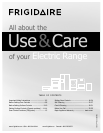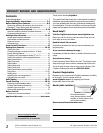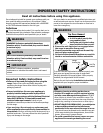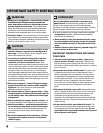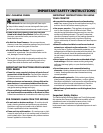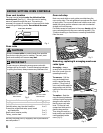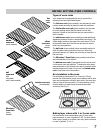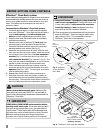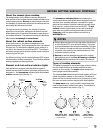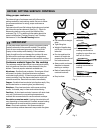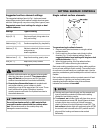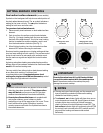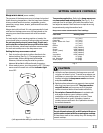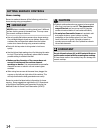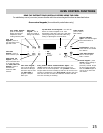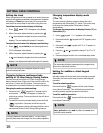
7
BEFORE SETTING OVEN CONTROLS
Types of oven racks
Fig. 1
Your range may be equipped with one or more of the
following oven rack types listed below:
The flat oven rack (some models) may be used for most
cooking needs and may be placed in most rack positions.
The flat handle oven rack (some models) may be used
for most cooking needs. May be placed in most rack
positions. Similar to the flat oven rack but comes with a
built-in handle.
The offset oven rack (some models) provides additional
stepdown positions from the standard flat rack design. The
offset design positions the base of the rack about 1/2 of a
rack position lower than the flat rack and may be used in
most oven rack positions.
The half rack (some models) has a removable section to
allow for taller cooking utensils in the oven. When the
removable section is in place, the rack may be used like the
flat oven rack.
The Effortless™ Oven Rack (some models) instructions
are provided later in this section.
The bottom oven rack (if equipped) should only be used
in the lowest oven rack position. To maximize oven space,
place cookware on the bottom oven rack for example when
roasting large cuts of meat. Do not use the bottom oven
rack in any other oven rack position.
flat
oven
rack
flat
handle
oven rack
(some models)
offset
oven rack
(some
models)
Effortless™
Oven Rack
(some
models)
half
oven rack
with
removable
shelf (some models)
bottom oven rack
(somemodels)
Baking layer cakes with 1 or 2 oven racks
For best results when baking cakes using 2 oven racks,
place cookware on rack in positions 2 & 5. For best results
when using a single or an offset oven rack, place cookware
on rack in position 2, 3 or 4.
Air circulation in the oven
For best baking results allow 2 to 4 inches (5-10 cm)
around the cookware for proper air circulation and be sure
pans and cookware do not touch each other, the oven door,
sides or back of the oven cavity. For even heating, hot air
must be able to circulate freely around the pans and
cookware (See Fig. 1).



